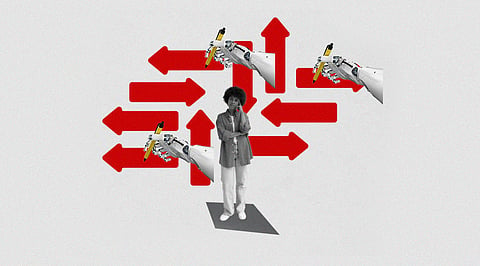
- Insights
- Cryptocurrencies
- Stocks
- White Papers
- Industry
- Geography
- Insights
- Cryptocurrencies
- Stocks
- White Papers
- Industry
- Geography


Data analytics is collecting, organizing, analyzing, and interpreting data to gain insights and make decisions. Data analytics is essential for various fields and industries, such as business, science, healthcare, education, and more. However, data analytics is not immune to human error, which can cause serious problems and consequences. Human error can occur at any stage of data analytics, such as data entry, sampling, analysis, interpretation, and presentation. Some common causes of human error are lack of experience, fatigue, bias, misunderstanding, and miscommunication.
Fortunately, artificial intelligence (AI) can help prevent human mistakes in data analytics by automating and enhancing the process. AI is the branch of computer science that deals with creating machines and systems that can perform tasks that normally require human intelligence, such as learning, reasoning, and problem-solving. AI can leverage various techniques and tools, such as machine learning, natural language processing, computer vision, and more, to process large amounts of data quickly and accurately. AI can also learn from data and improve over time, making it more reliable and efficient.
Here are some of the ways that AI helps prevent human error in data analytics:
Data entry is the process of entering data into a system or database for further processing and analysis. Data entry can be tedious, time-consuming, and prone to typos, missing values, formatting issues, etc. These errors can affect the quality and accuracy of the data and lead to incorrect results. AI can help prevent data entry errors by detecting and correcting them automatically. AI can also learn from the data and suggest improvements. For example, AI can flag outliers, anomalies, duplicates, and inconsistencies in the data. AI can also automate data entry by extracting data from various sources, such as images, videos, PDFs, and more.
Sampling is selecting a subset of data from a larger population for analysis. Sampling can be challenging and error-prone because it requires choosing the right sample size, method, and criteria to represent the population accurately. Sampling errors can result in biased or inaccurate findings that do not reflect reality. AI can help prevent sampling errors by automating and optimizing the sampling process. AI can use historical data and statistical methods to identify the most relevant and representative data points for analysis. AI can also process large amounts of data in a fraction of the time it would take a human.
Analysis is applying various techniques and methods to data to discover patterns, trends, relationships, and insights. Analysis can be complex and difficult because it requires choosing the right tools, models, algorithms, and parameters to analyze the data effectively. Analysis errors can occur due to misinterpretation, misunderstanding, or misuse of data or tools. AI can help prevent analysis errors by performing high-level arithmetic, logical, and statistical functions on data sets. AI can also use machine learning algorithms to detect patterns and make predictions based on millions of data points. AI can provide more accurate insights and recommendations that humans cannot do alone.
Interpretation is the process of explaining the meaning and significance of the results obtained from data analysis. Interpretation can be subjective and influenced by human factors such as bias, assumptions, emotions, expectations, and more. Interpretation errors can lead to wrong conclusions and flawed decision-making. AI can help prevent interpretation errors by providing objective and evidence-based explanations for the results. AI can also use natural language processing to generate clear and concise summaries and reports that are easy to understand.
Presentation is communicating the results and insights from data analysis to an audience or stakeholder. Presentation can be challenging and error-prone because it requires choosing the right format, style, and medium to convey the message effectively. Presentation errors can occur due to poor design, misrepresentation, or omission of information. AI can help prevent presentation errors by creating and enhancing visualizations and dashboards for the results. AI can also use computer vision to recognize and adapt to different audiences and contexts.
AI's impact in fixing human error in data analytics is undeniable. It can eliminate and prevent all kinds of mistakes you make when working with data and do it much faster than anyone could ever hope to accomplish. Finally, as we enter a new era when data analytics is more crucial than ever, AI will continue to play a significant role.
